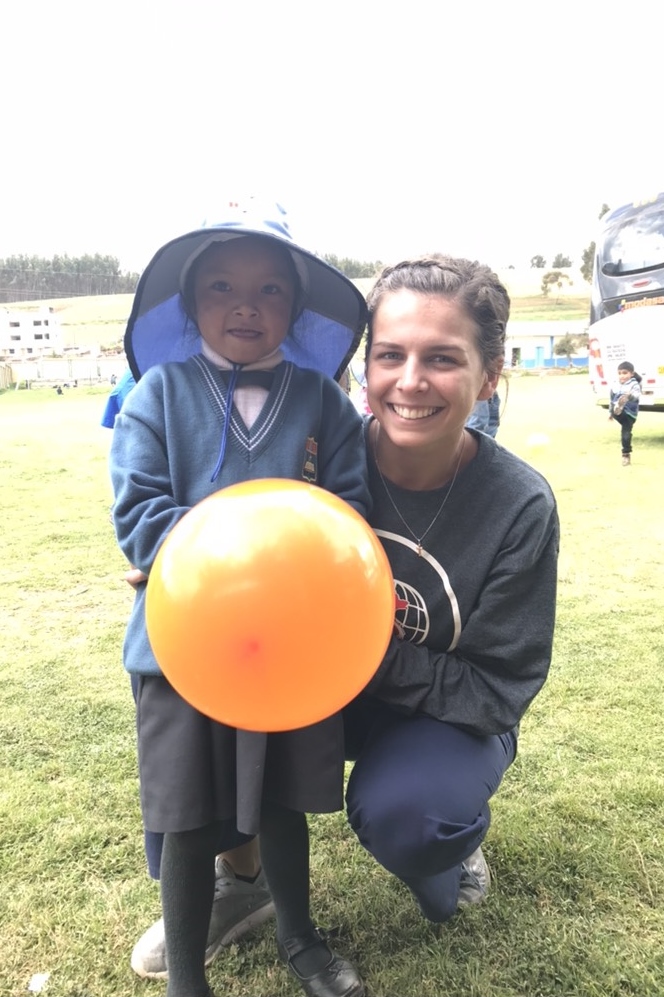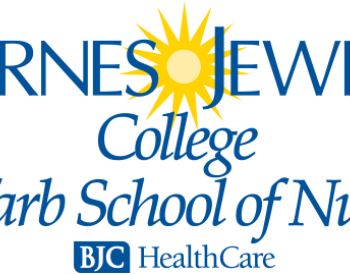

In April, a group of faculty, students and alumni from Barnes-Jewish College Goldfarb School of Nursing joined Nurses2Peru on a medical mission to Peru. Read one student's experiences during the trip. In April, a group of faculty, students and alumni from Barnes-Jewish College Goldfarb School of Nursing joined Nurses2Peru on a medical mission to Peru. They took suitcases filled with medical supplies, thanks to support from Kindness In A Box, and set off with a purpose: offering healthier lives to Peruvian people living along the Incan trail. During the trip, students were able to help communities in need of health care, provide care for patients of all ages and enhance their nursing skills.
Now back at Goldfarb, the 11 students who participated have had time to reflect on their experiences. Each member of the groups says the trip was a once-in-a-lifetime experience, though all of them want to participate in similar missions in the future—and maybe even return to Peru.
Following is a report from Natalie Kuldell, one of the students who traveled with the group.
Peru Medical Mission Trip
From April 20th through April 29th, I was in Maras, Peru, with a group of 25 medical professionals, including nurse practitioners, registered nurses and nursing students. Our mission was to offer health care screenings and provide basic medical care, such as pain management and education about protection from the sun and hand-washing. We took more than 20 suitcases with us, filled with donated medical supplies, including band-aids, syringes, sunscreen, medications and toiletries.
Our first day, we visited Maras Hospital. It was eye-opening to see what few resources the community has, even in its hospital, which had dirt floors, two stethoscopes for the entire staff to share and only one place for the staff to wash their hands. The facility also has a dental office and several rooms for labor and delivery, but it doesn’t have X-ray or MRI machines. If a patient needs surgery, he or she must take a cab to a larger hospital. People living in the villages surrounding Maras Hospital find it nearly impossible to reach it by foot. We met with Dr. Victor and Dr. Joe, the doctors who work in the hospital. Both physicians decided to join our group as we visited different villages throughout the countryside.
Each day when we arrived in a new village, we quickly unloaded our supplies and set up a registration table, triage area and pharmacy, and we cleared out a classroom for nurse practitioners to use to see patients. At the registration table, student nurses wrote down the patient’s name, age and school grade, if the patient was a student. We also recorded the height, weight and waist circumference of each patient. Nurses and student nurses worked together to take temperatures and measure oxygen saturation with a pulse oximeter. We also recorded heart rate and blood pressure, and assessed heart sounds and lung sounds. After vitals were taken, patients waited in line to be seen by a nurse practitioner or doctor. The examination included a quick assessment and a conversation about health concerns. Most complaints were related to abdominal or joint pain, and almost everyone had chapped cheeks from sunburn. At the end of the examination, the physician wrote prescriptions as needed that could be filled by our small pharmacy. Almost all patients we saw were given notes that recommended they eat one egg per day, take vitamins, apply sunscreen and use an analgesic. We filled the prescriptions and placed medications in Ziploc bags, some of which we gave to schoolteachers to distribute the next day to students in class. When we were done seeing patients, we repacked all the supplies into the suitcases and headed home for the day. The majority of health problems we saw were growth-stunting from malnutrition, arthritis from years spent working in fields, parasites from drinking contaminated water and impacted cerumens.
In the village of Anccoto, we saw 187 patients, including school children and senior citizens. At the school of Mhauypampa, we saw 180 people, ranging from newborn babies to senior citizens. The third day, we saw almost 150 students from two different schools: St. Dominic and Chequerec. In Mullakas, the final and poorest village we visited, we saw 70 patients, including school-age children. Each patient we cared for was extremely grateful for our help, many of them thanking us with a hug and a kiss on the cheek. During our week in Peru, we helped almost 600 people, many of whom were receiving medical care for the first time in their lives, even though that care might be something as simple as a daily multivitamin. On two separate days, we were rewarded with the beautiful view of a rainbow as we left the village to return home. It was gratifying to know that we were truly making a difference in people’s lives.
This trip was life-changing. I am grateful to have been given the opportunity to help the people of Peru and to work alongside some of the most amazing nurses I have ever met. I was able to perfect the skills I have learned so far as a nursing student, while learning about medication dosing and treatments for different ailments. Our group worked well as a team; even though we worked hard all day every day, we still had fun doing it together. I hope that I will be able to return to Peru to see improvements in people’s lives and their communities.
To view footage from the trip, go to https://vimeo.com/271685410.
Follow the Blog via Email
Enter your email address to follow this blog and receive notifications of new posts by email.
Follow the Blog via Email
Enter your email address to follow this blog and receive notifications of new posts by email.

